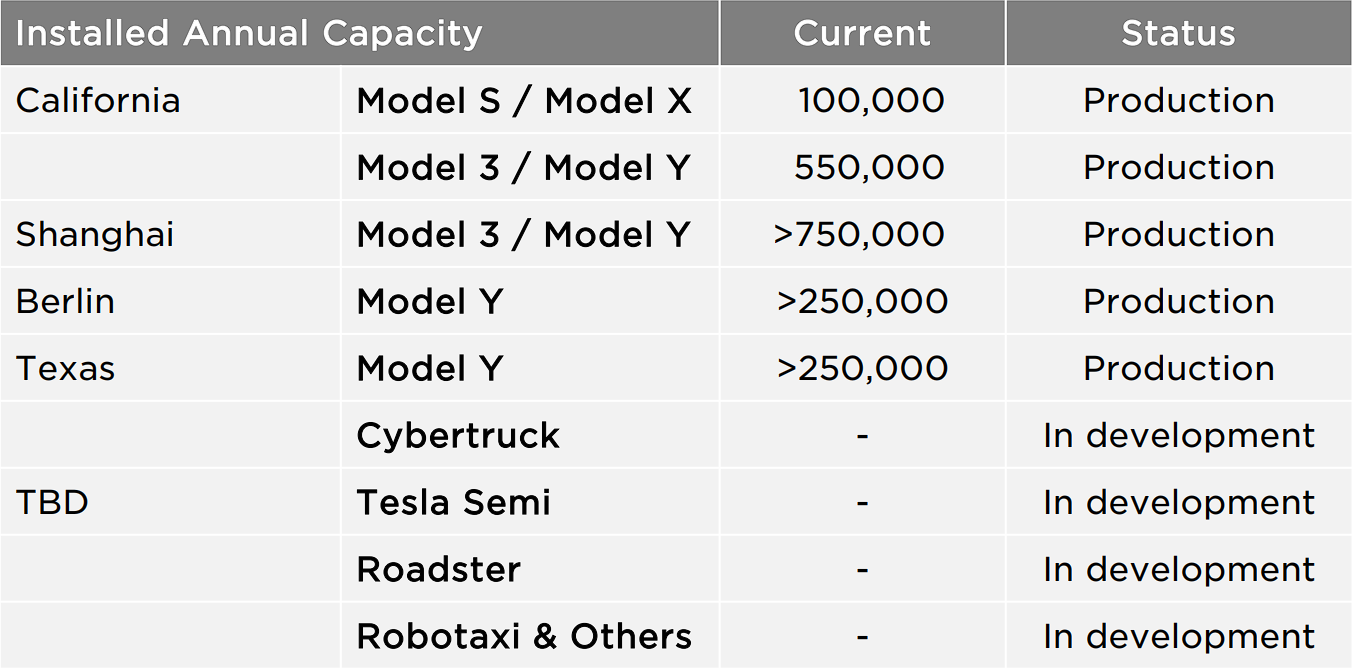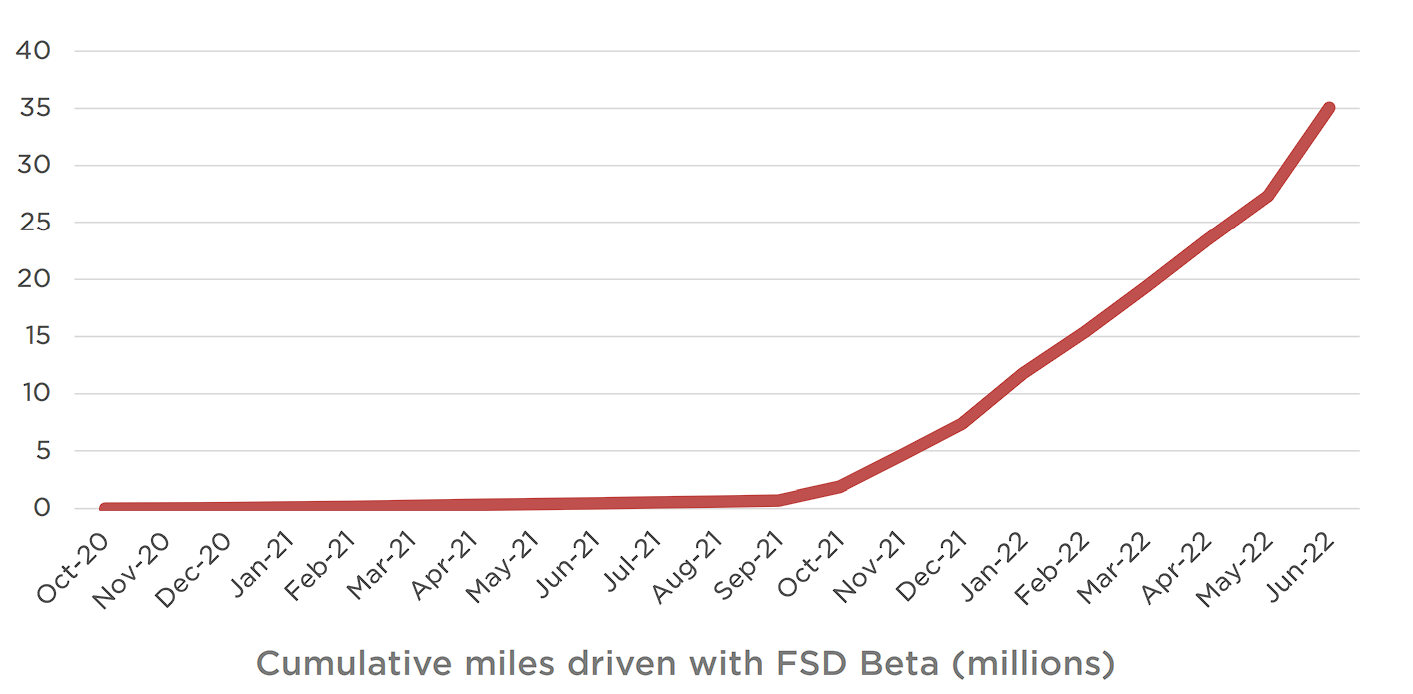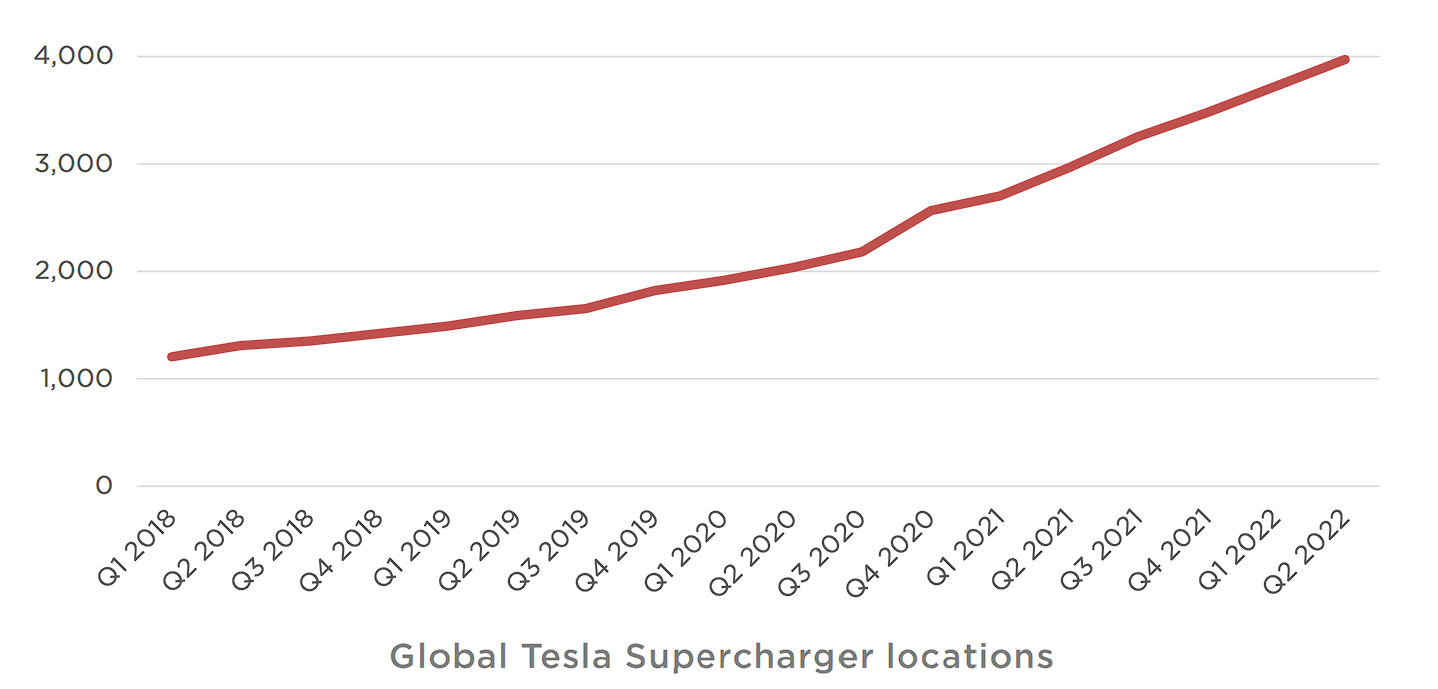
Tesla Q2 Tidbits: 1.9M Production Capacity, 4,000 Superchargers and More

Tesla today published its earnings for the second quarter of the year, reporting $16.9 billion USD in revenue and a net income of $2.3 billion. The company also shared a stockholder deck, giving us a look at the company’s operations as they are now and some of its plans for the future.
According to Tesla’s slide deck for shareholders, the company now has a combined production capacity of more than 1.9 million electric vehicles (EVs) per year across all of its factories.

“We plan to grow our manufacturing capacity as quickly as possible. Over a multi-year horizon, we expect to achieve 50% average annual growth in vehicle deliveries,” the company said in its Q2 earnings report. The rate of growth will depend on our equipment capacity, factory uptime, operational efficiency and the capacity and stability of the supply chain.”
Tesla is now rating its Shanghai Gigafactory at 750,000 units per year, up from 450,000 previously. However, the company has even higher ambitions for the plant. A recent report indicated Tesla plans to intermittently take some assembly lines at Giga Shanghai offline during the third quarter to upgrade the facility’s annual production capacity to one million units.
Tesla also reported that it sold off the majority of its Bitcoin holdings during April and June 2022.
“As of the end of Q2, we have converted approximately 75% of our Bitcoin purchases into fiat currency,” the company said. Tesla made $936 million from the selloff.
More than 100,000 Tesla drivers in North America are now a part of Tesla’s Full Self-Driving (FSD) beta, the company said. Tesla expanded its FSD beta, which was previously only available in the U.S., to Canada at the tail end of Q1.
With FSD uptake surging, cumulative miles driven by Tesla EVs with FSD enabled increased at an unprecedented rate between April and June.

Tesla went on to stress the importance of the treasure trove of data a fleet of that size translates to. The more fleet data the company has, the faster it can improve its driver assistance and self-driving technologies. More data also informs other software innovations from Tesla.
“Vehicles with adaptive suspension in North America can now automatically adjust to a more comfortable ride height before encountering a section of rough road, informed by continuously-updated data collected by our fleet,” the company said. “Our latest vehicles now use Tesla Vision to tighten seat belts earlier in a wider array of frontal crashes.”
In addition, Tesla revealed that its global Supercharging network now comprises 3,971 locations, representing year-over-year growth of 34%. The company has a combined 36,165 Supercharging stalls at these stations.

Superchargers will only become more integral to Tesla’s business as it opens the network up to EVs from other automakers. The company is expected to start opening U.S. Superchargers to non-Tesla cars later this year.
…developing, refresh for updates

